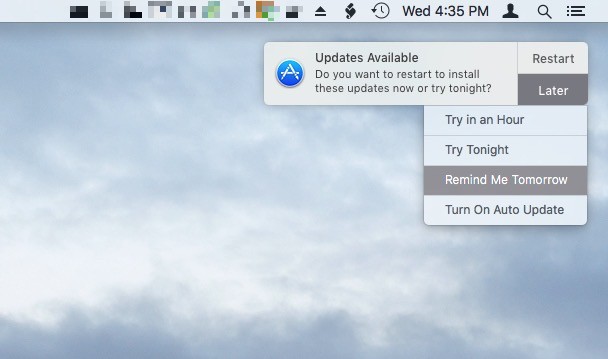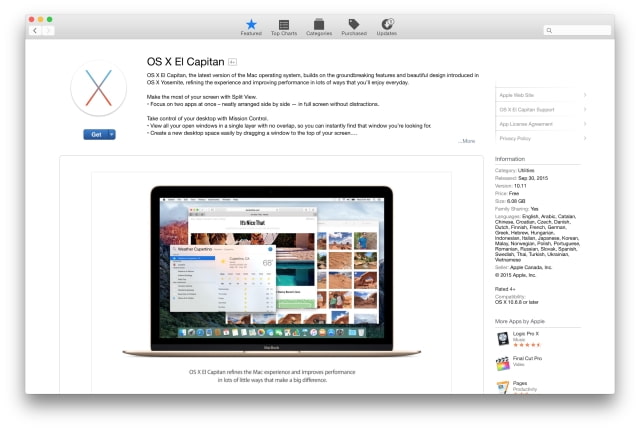
I’m trying to sell a 2009 MacbookPro. It’s the model MacbookPro5.5 and Apple supports macOS El Capitan 10.11 as latest available version.
I’ve wiped all data from the installed SSD and had to boot from an external disk. Now I’ve got two problems:


- I’ve only got a Mac with Big Sur and Apple Silicon. I cannot use the package installer from the download provided by Apple to create the installer App for El Capitan. However, I need access to the installer so that I’m able to use the createinstallmedia command.
- The 2009 MacbookPro is already wiped and has only access to the recovery mode. You cannot execute the package installer in Recovery Mode to extract the media.
How to Perform a Clean Install of OS X El Capitan. OS X El Capitan (OS X 10.11) offers two installation methods. This guide focuses on the 'clean install' method. When you install El Capitan on your current startup drive with the clean install method, you erase everything on the drive. That includes OS X, your user data, and personal files. OS X El Capitan on Unsupported Macs. MacOS Extractor, OS X Patcher, and MacPostFactor are apps that guide you through patching and installing OS X El Capitan (10.11), Yosemite (10.10), Mavericks(10.9), or Mountain Lion (10.8) on your older Mac. MacOS High Sierra 10.13 can upgrade Sierra, El Capitan, Yosemite, Mavericks or Mountain Lion; Safari will download the following older installers as a disk image named InstallOS.dmg or InstallMacOSX.dmg. Open the disk image, then open the.pkg installer inside the disk image. It will install an app named Install Version Name. Open that app from your Applications folder to start installing the operating system. To start the installation of El Capitan double click on the Install OS X El Capitan.app. The copy of the install app self deletes after installing El Capitan, so make sure you keep a copy of the InstallMacOSX.dmg. If you need it in future, or you could just make a copy of the Install OS X El Capitan.app prior to installing and moving it to. Make sure you have Install OS X El Capitan.app in your Application Folder 2. Select 'On an external drive' on the main MCPF window. Then, choose the disk you want to install the El Capitan installer on. Click install and prompt your password. Boot the computer you want to install El Capitan on with 'alt' held and select your USB drive.
Luckily I’ve found this blog post from Chris Warrick who explained how to extract the installer App from the package:

- Attach an external Disk which contains the downloaded pkg from Apple. You’ll need enough space on that Disk to extract the pkg and it needs to be writeable
- Open the Terminal from inside the Recovery Mode
- Go to the mounted volume
- Extract the package:
Now we can try to create the install media from the installer app. Make sure you’ve attach another disk which can be overwritten by the installer. In this example its named “MyBlankUSBDrive”:
The InstallESD.dmg image is missing, which we’ll need to add to the right location:
Download El Capitan Installer App
Now we’ll have a valid installation medium which can be used to start the installer from. You can reboot from that disk and should be able to install El Capitan.
Mac Os El Capitan Download
However, I’ve encountered another annoying issue which caused the installer to fail:
El Capitan Installer cannot be verified
El Capitan Os X Download
Oh great… On to the next commands you can try from the Terminal inside the Recovery OS:
Install Mac Os El Capitan On External Drive
installer -pkg /Volumes/Mac OS X Install DVD/Packages/OSInstall.mpkg -target /Volumes/'XXX'where XXX is the name of the disk you’re installing to.- Wait for the installation to say it’s complete. You will not see any sort of progress display.
Install Mac Os El Capitan Dmg
Great, you’ve got El Capitan installed! Apple had some issues with certificates and people found a way to either use the above commands for installation or you’ll have to tinker with your Macs time settings so that the signature is valid again. I would have expected that Apple resigned all installers so I wouldn’t have to use these commands at all but doesn’t look like they did.